87% of marketers that measure ROI say ABM outperforms every other marketing investment.
ITSMA
Maybe it goes without saying, but we think that Account Based Marketing is here to stay as an effective strategy to drive more leads for your business.
Why is ABM important? It allows you to start your sales process by selling directly to your best-fit, highest-value accounts. This is made possible by aligning your sales and marketing teams to create personalized buying experiences for mutually-identified accounts.
This post will talk about the differences between ABM and inbound and the basics you need to get your HubSpot Account Based Marketing strategy up and running.
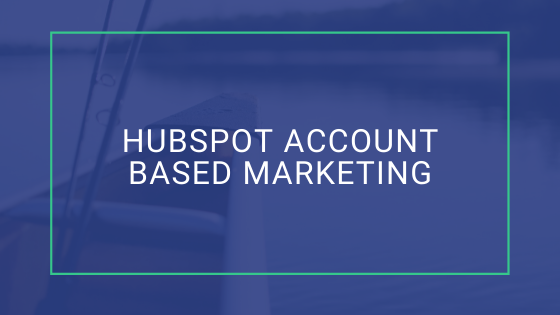
Inbound vs ABM: What’s the difference?
You likely know HubSpot supports the inbound methodology so you may be wondering, how does ABM fit into the picture?
Both strategies are still hyper-focused on leads and using valuable content to convert them. The best way to actualize the difference between the two strategies is by thinking of it as the difference between fishing with a net vs fishing with a spear.
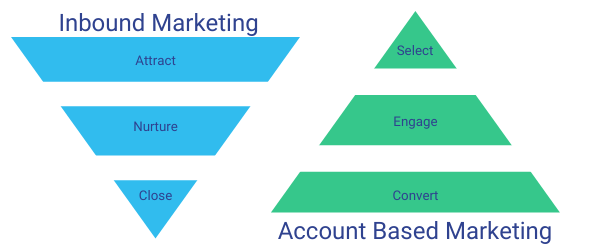
Inbound Marketing
Inbound focuses on attracting a wide range of potential customers through relevant high-quality content offers and follows HubSpot’s inbound methodology of attract, convert, close and delight. So just like fishing with a net, your catch can vary by industry, role, and business need.
Pro Tip: Do your keyword research! Making sure your content efforts are highly targeted and keyword-focused helps ensure you are attracting the right audience.
Account Based Marketing
Account Based Marketing is the process of Sales and Marketing working together to close deals at a specific set of Target Accounts. Unlike conventional, volume-based marketing approaches, ABM is more about attracting and engaging the right contacts from each of the Target Accounts that Sales and Marketing selected together.
So just like fishing with a spear, you’re making moves towards specific targets and using highly targeted valuable content to convert them.
Inbound & ABM Working Together
Inbound and account based marketing don’t have to be mutually exclusive. Companies may find that one works better than the other, but both can be a part of a holistic marketing strategy and leverage HubSpot.
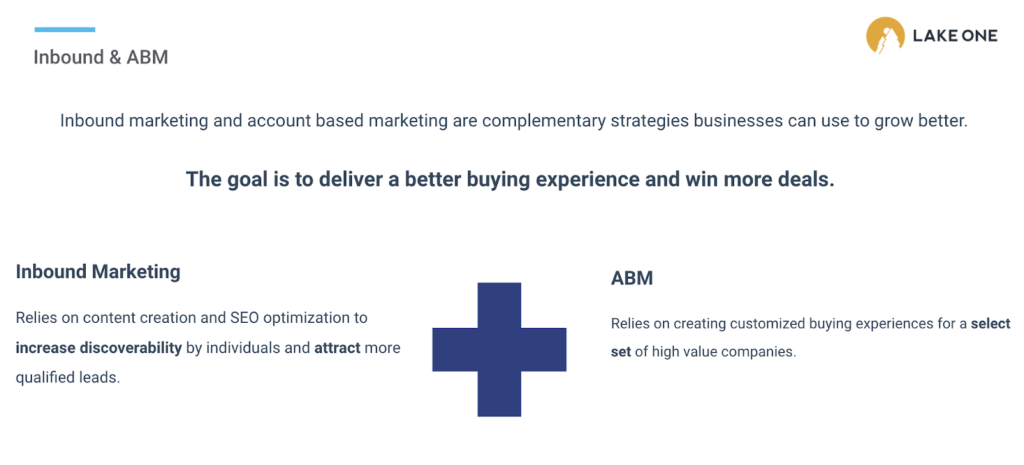
Here are two more added benefits of using ABM and inbound together to win more deals.
- Attract More Prospects – You attract a broader group of prospects than you would using just one method and catch opportunities that one strategy may have missed.
- More Content Bang for Your Buck – You can create content that works for both ABM and inbound. Examples: Case studies, white papers, brand videos, etc.
Setting Your ABM Strategy in HubSpot
HubSpot’s Account Based Marketing tools are some of our favorites from the big-time marketing software platform. HubSpot has stepped up to the plate and knocked their added features out of the park.
Setting your ABM strategy in HubSpot starts with defining and configuring the ABM default properties and using workflows to help set tiers and notify sales on the fly. The bonus? ABM is tied into the HubSpot CRM so all account activity can still be found on contact records.
But First, Ideal Customer Profiles
Ideal Customer Profiles (ICPs) are a critical part of ABM strategy and we’d be remiss if we didn’t mention them. Just like any element of your sales and marketing strategy, setting your ICPs is a team effort and should be agreed upon by key stakeholders.
An ICP is much like a buyer persona in that it’s a fictitious company that embodies all of the qualities that would make them the best fit for the solutions that your company provides.
Pro Tip: Think about these thought starters when trying to determine your ICP: Budget, Revenue, Company Size, Geo, or Industry. Also, if you can capture elements of your ICP via a form? Bonus.
HubSpot’s Account Based Marketing Properties
HubSpot has created three key properties to support ABM. Data from the following properties will be used in your ABM dashboards, reports, lists, target accounts home, and account overview.
Buying Role
Buying role is a new contact property that identifies the role that a contact plays during the sales process. In HubSpot, contacts can have more than one role and can share the same role with another contact.
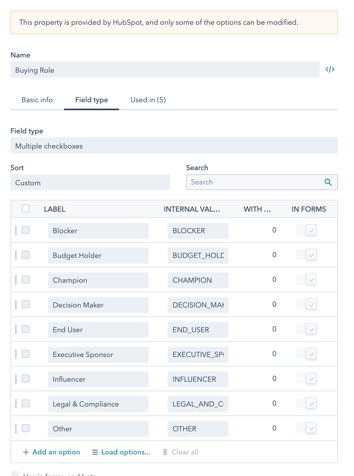
Target Account
Target Account is a company property that identifies a company that you are marketing and selling to as part of your ABM strategy. It’s a single checkbox that makes your life a whole lot easier when it comes to reporting, your target accounts home view, and more.
Ideal Customer Profile Tiers
Ideal Customer Profile Tier is a company property that categorizes how closely a company matches your ideal customer profile in three tiers. Companies that are Tier 1 should be a great fit for your products/services and Tier 2, slightly less so, and Tier 3 might be acceptable, but considered low priority.
Pro Tip: Ideal Customer Profile Tiers are meant to help you categorize and set priorities. However, if you are working with just a handful of select target accounts set the tier to 1 and table the rest until you need them.

Leveraging HubSpot Workflows for ABM
Whether you use HubSpot’s workflow templates or start from scratch, you have the ability to customize and really create automations that work for you and your sales cycle. Here are a few of our favorites for ABM.
Ideal Company Profile Tier Setting: HubSpot actually has a template for this, but you can use workflows to automatically set tiers based on your criteria. It saves a step and makes the tiering less manual.
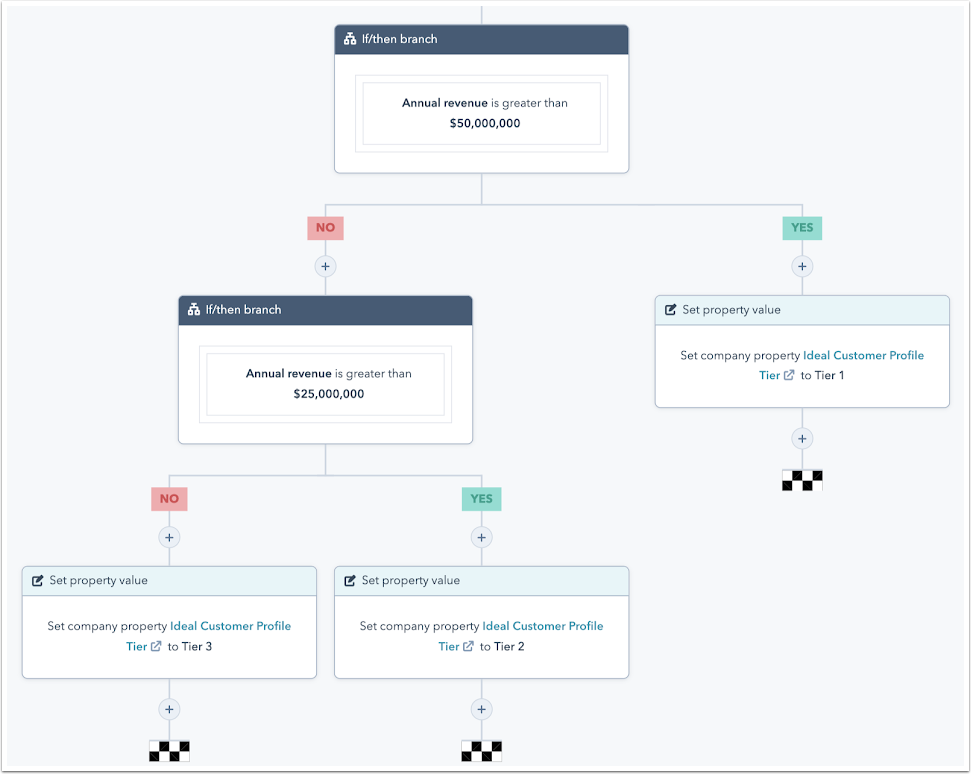
Image from HubSpot
Lead Nurturing: ABM is still a strategy that’s focused on high valued content and the content will fall into various stages of the buyer’s journey. So once a lead converts, use marketing automation to nurture your leads until they are ready to engage with sales.
Recommended Reading: 8 Cringeworthy B2B Email Nurturing Mistakes that Leave Your Leads Dead in the Water
Account & Sales Notifications: Use marketing automation to notify your sales team based on ABM activity like buying role conversions or highly engaged target account activity. Much like a Marketing Qualified Lead (MQL), you are thinking about what constitutes a sales-ready lead or target account, and then engaging sales when the timing is right.
Pro Tip: HubSpot offers a free lesson on ABM. You can learn the five steps for building and executing an ABM strategy and how HubSpot’s tools can help in just 19 minutes.
HubSpot Account Based Marketing Integrations
HubSpot allows for the integration of several tools to help fuel your ABM strategy. These tools essentially comprise your marketing tech stack. Here are a few that are at the top of our list.
Slack
We are big fans of slack. The Slack and HubSpot integration has certain features that can help your ABM strategy, including:
- Creating deal or company-based Slack channels through a HubSpot workflow
- Entering a /hs-report-company Slack command to receive metrics on a target account
- Sharing notes in HubSpot to Slack immediately when on a call or during a meeting
- Turn Slack conversations into HubSpot tasks
Check out this blog to read about more reasons Lake One loves Slack! – How We Work From Home: 10 Tips from a Remote Marketing Team
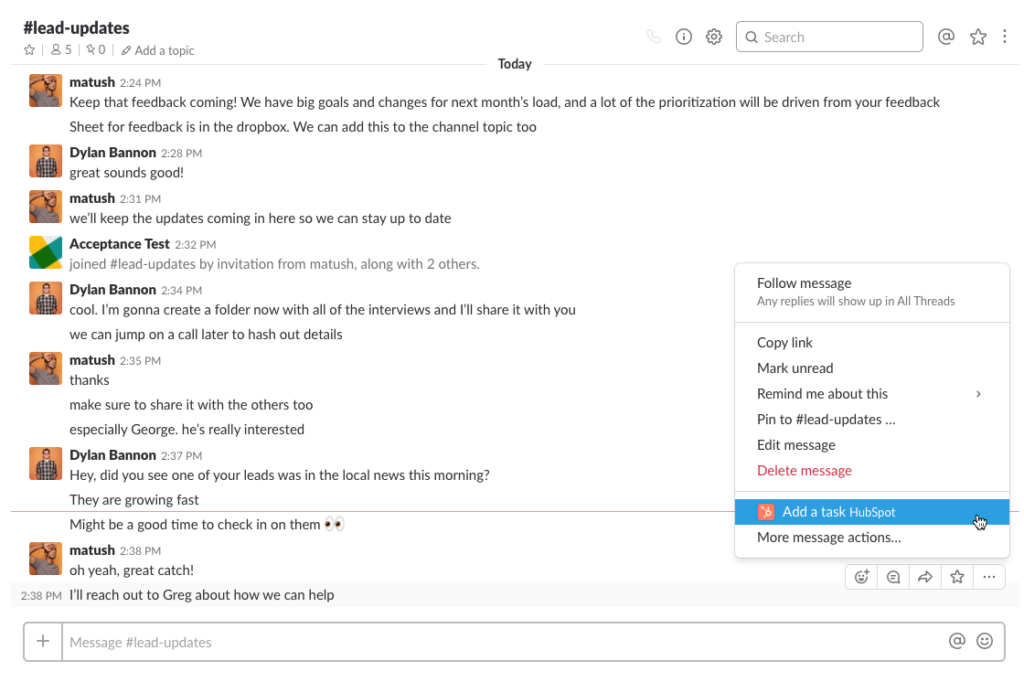
Creating ad campaigns can be a major component of ABM and your LinkedIn marketing strategy. If you’ve connected your LinkedIn Ads account to HubSpot, you can create a company list audience to automatically sync companies from your target accounts or a specific company profile tier to the matched audience in LinkedIn. Cha-ching.

Related Reading: Igniting Your Account Based Marketing Strategy with LinkedIn
Vidyard
According to Wyzowl’s State of Video Marketing Survey, 80% of video marketers say video has directly helped increase sales. Sign. Us. Up. Oh wait, we already did. See below. ?
One of our favorite platforms for video that integrates directly with HubSpot and can be used to further your ABM efforts, is Vidyard. You can easily create, track, and insert personalized videos into your emails and HubSpot landing pages. Here are a few key uses:
- Easily embed your videos anywhere
- Access advanced video analytics and viewer tracking
- Create in-video CTAs with links to your website pages, like a blog post, meetings page, or pricing page.
- Create video playlists to combine multiple videos into a single player
- Automatically generate video transcriptions for improved accessibility and SEO.
- Provide product demos, customer testimonials, marketing videos, and more.

Learn more about HubSpot’s Vidyard integration and partnership here.
HubSpot Account Based Marketing Reporting & Dashboards
Reporting is critical and much like HubSpot’s inbound reporting, you can expect dashboards and reporting templates to be available with a click to support your ABM efforts. Simply starting with HubSpot’s Account Based Marketing dashboard template, you get 9 out of the box reports that focus on answering questions about your ongoing ABM campaigns and provide a better understanding of its success (or lack thereof). Reports included in this dashboard are:
- Ideal customers
- Contacts created at target accounts monthly
- Target accounts by page views
- Buying role by target account
- Contact source report by target account
- Contact lifecycle stage by target account
- Deal stage by target accounts
- Target accounts by active deal amount
HubSpot Reporting Examples
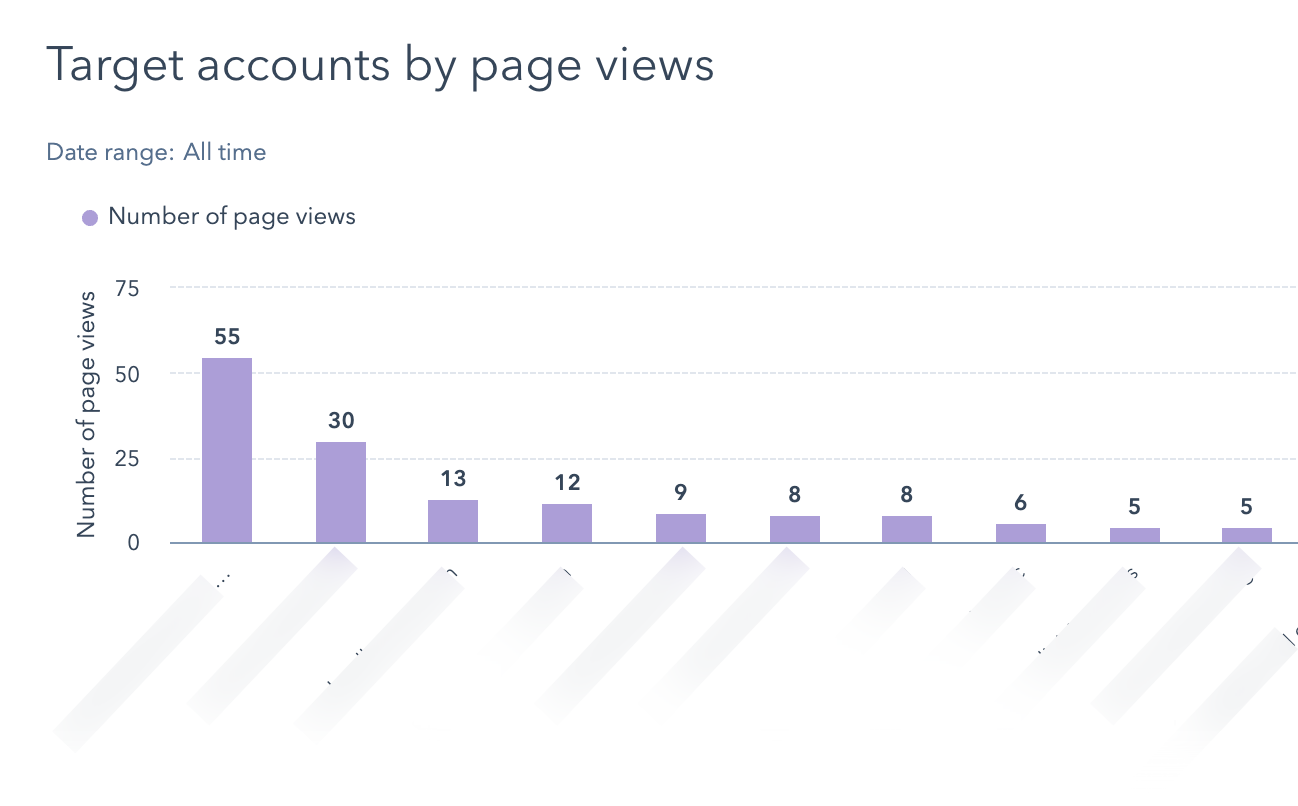
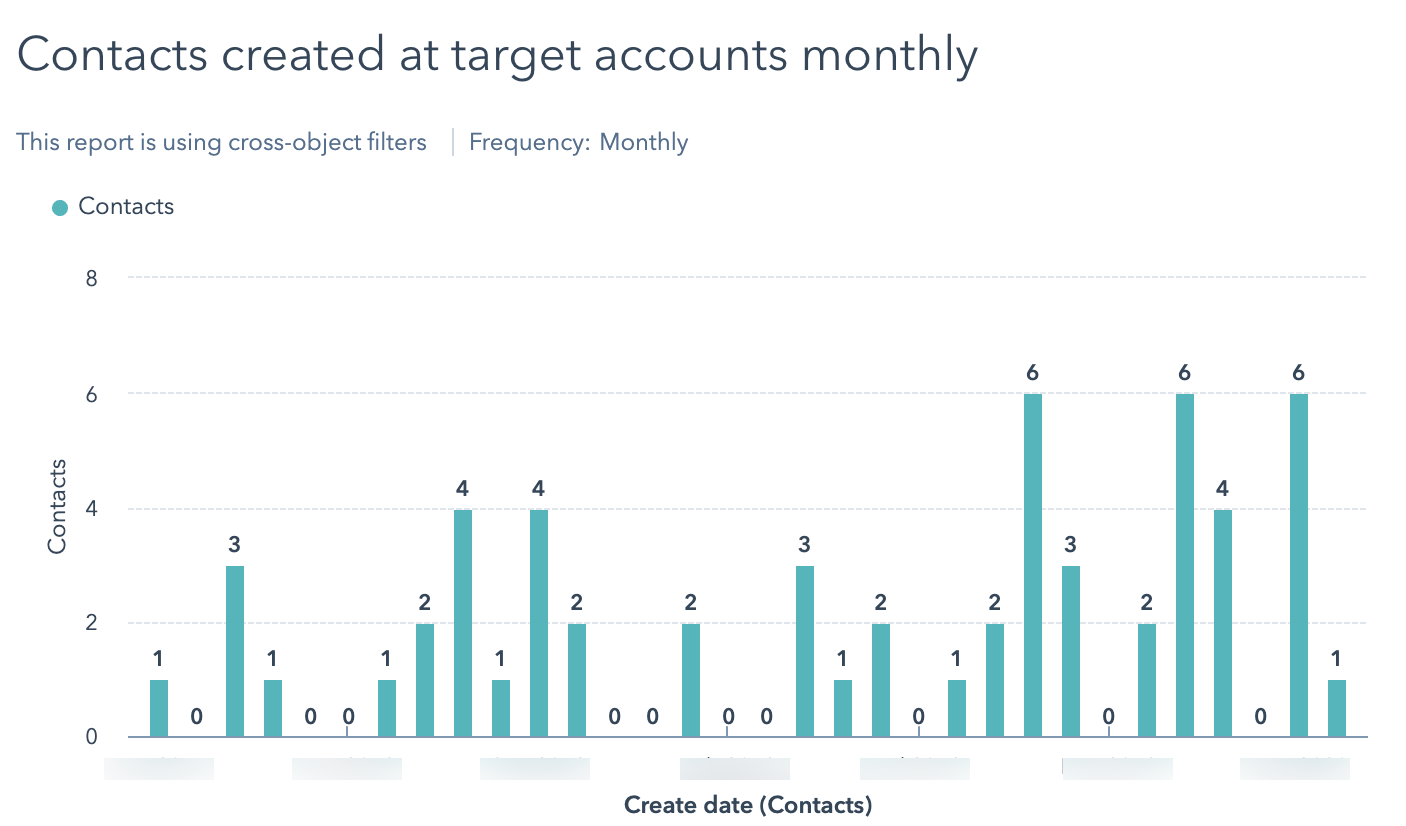
How Much Does HubSpot’s Account Based Marketing Software Cost?
If all of this sounds great, you’re likely asking how much does it cost? HubSpot’s new tools for account based marketing are now available in Marketing Hub Professional and Sales Hub Professional products. With the majority of new ABM tools shared between Marketing Hub and Sales Hub, you may want to consider access for both.
Here’s the breakdown from the Hubs.
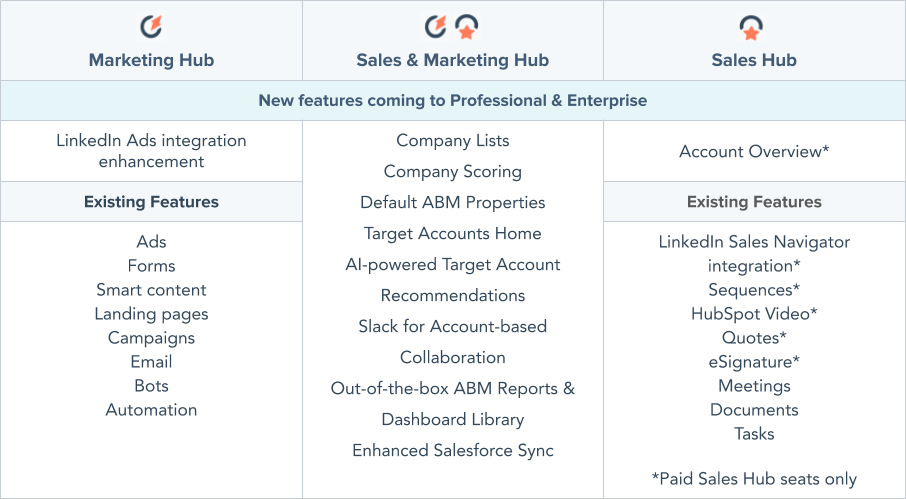
Is ABM Right for Your Company?
Still trying to decide if ABM is right for you? This quick online quiz will help you determine if your organization is a good fit for account based marketing.



